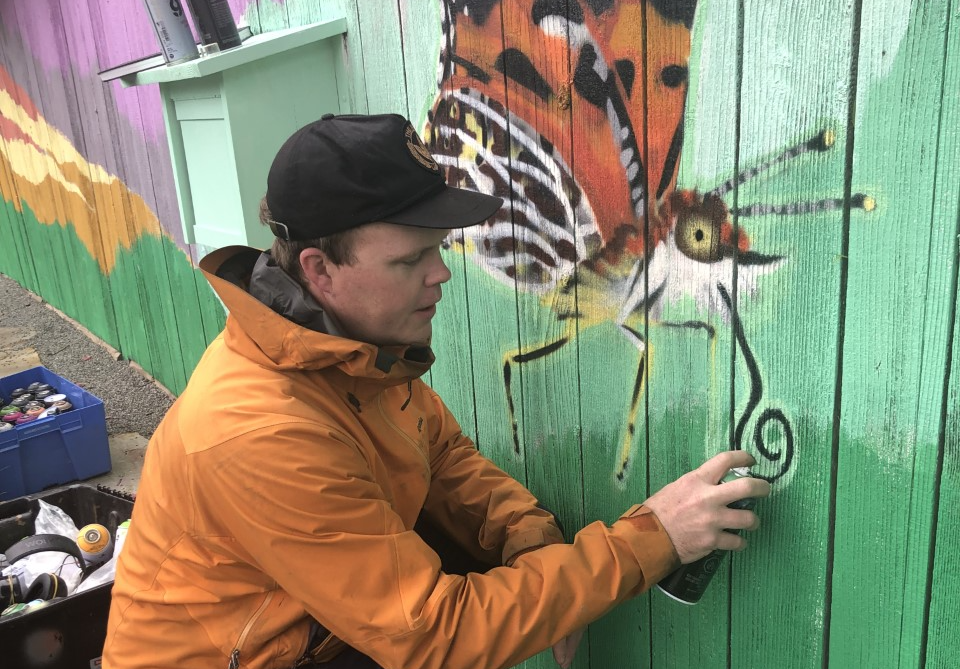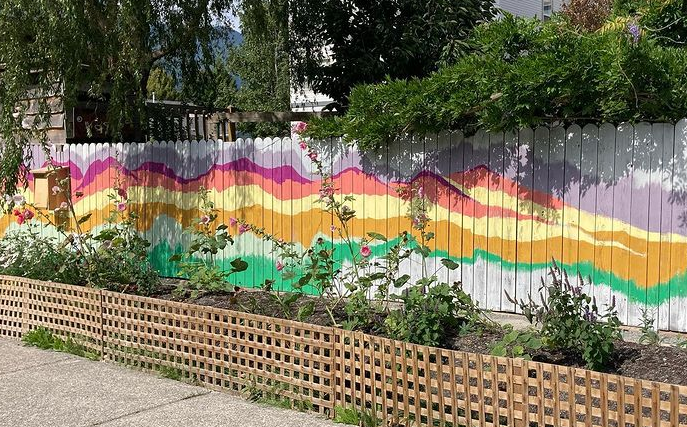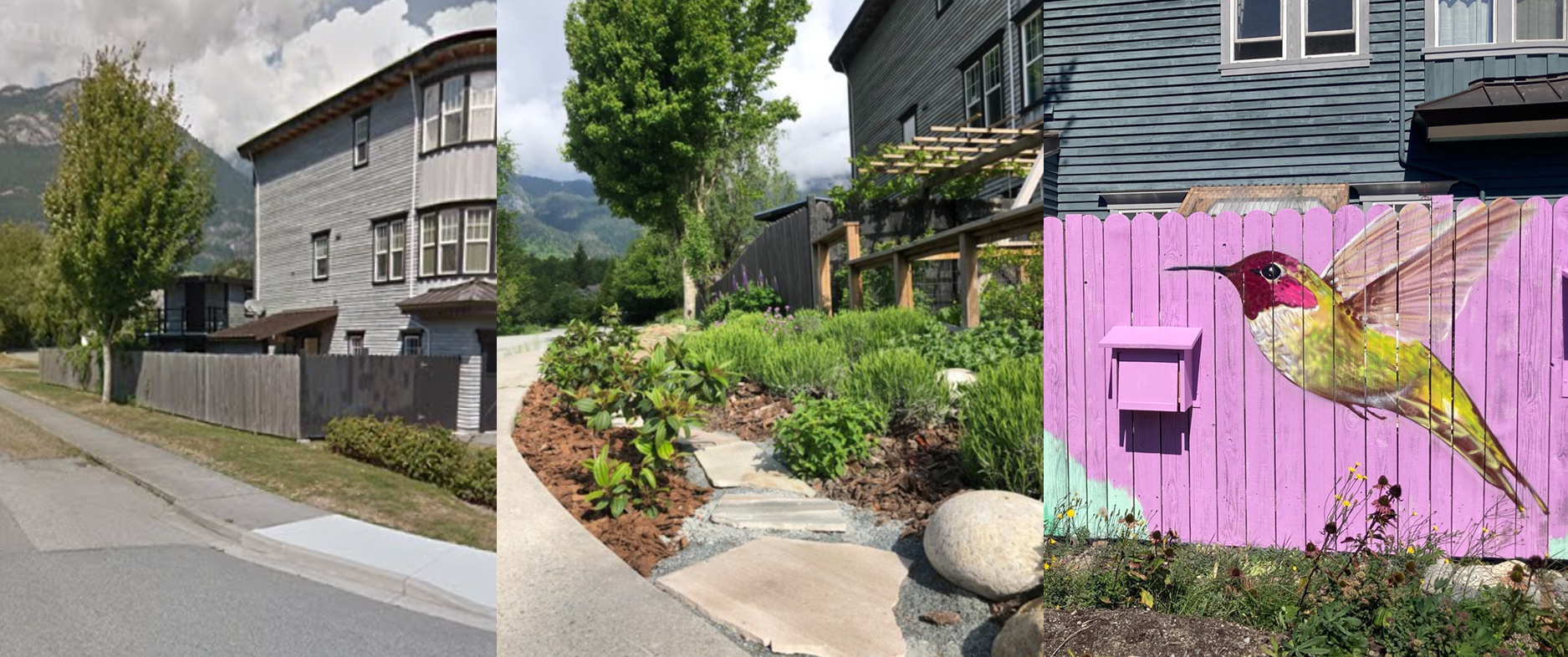The pollinator garden in Squamish (near Fourth and Pemberton) continues to flourish. Mural artist, Stan Matwychuk, has recently contributed yet another attractive element to the already inviting garden space.
Stan is a long-time Squamish mural artist. “He is responsible for the vibrant educational artwork in progress on the garden’s southside fence,” says Dr. Ellen Flournoy of Quest University. “His vision is to showcase the Squamish winds and our native pollinators with their favorite companion plants.”

(Check out Stan’s Instagram to see the mural progress over time.)
As far back as 2016, Quest students had submitted a proposal to the District of Squamish for a pollinator corridor. This added to the buzz of pollinator conversations already taking place among various garden collectives around town.
Dr. Ellen Flournoy propelled the project forward with an environmental grant application to Squamish Savings. Shortly after, Emma Dunlop joined the project as a Keystone researcher. (Check out Emma’s Keystone Project)
“Emma would read up on a theme in pollinator research, such as supporting ground and cavity nesters and add it into our garden plan somehow,” said Ellen. “…my partner, James and I would make that happen. Through that implementation of Emma’s research, we learned a lot.”
The garden has grown into what it is today, thanks to the contributions of many hands: Funding has come from Squamish Savings, Squamish Community Foundation, WCBEF, and Whistler Blackcomb Envirofund. The Men’s Shed built the infrastructure. The community has given its support.
Dr. Ellen Flournoy has watched the gardens progress with pleasure. She says:
These days, the garden is becoming a place that connects community members. People are stopping by to ask questions about the mural and wildflowers and guessing the purpose of infrastructural pieces, like the display boxes: ‘Are those for bees or bats?’ . . . Workers on break are meeting for lunch to sit on and around the same bench! It’s actually really satisfying to see people gathering there.
For the future, I hope the garden comes into its educational purpose. Once Quest students fill those display boxes with research-based materials and we install signage about supporting pollinators in residential gardens, I think the garden will really become what Emma and I intended!
(For more background information, read our previous article on pollinator garden)


